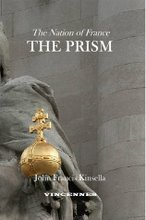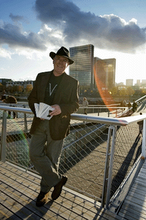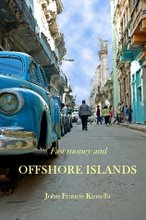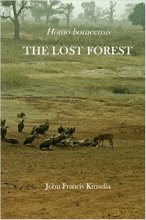The Legacy - A Chapter
They left for Jerusalem early the next morning, just sixty or so kilometres from Tel-Aviv. Hertzfeld had laid on a people carrier for the day, the best, with aircon and coffee. As O'Connelly took in the scenery it only confirmed to him his earlier impressions, the roads of Israel were nothing less a huge chaotic parking lot, even at that early hour the highway was choked with tailbacks, and whenever the traffic got moving the drivers were bent on either suicide or murder.
Once they had passed Ben Gurion Airport the traffic slackened a little and after about thirty or so kilometres the road started to rise turning around the steep hills that led up to Jerusalem. Their driver pointed out, amongst the sparse pine woods that bordered the road, the rusting carcases of Israeli home made armoured vehicles that lay abandoned or destroyed in their battle for independence, almost sixty years before, left as a remembrance.
Their first stop was a café overlooking the Old City where they seated themselves at a table and spread a map on the table, identifying the different edifices saw before them.
‘What I’d like to do is make a tour of the walls of the Temple Mount, get a feeling for the layout,’ said Hertzfeld.
‘Have you been here before?’ asked Laura.
‘Sure, but to be honest apart from a couple of visits to the Wailing Wall I can't say I've really thought about the religious or historical aspects very much.’
‘You're Jewish?’
‘Yes, my grandparents came from Germany. They immigrated to the US after the Crystal Nacht. My family was lucky, they owned a successful publishing firm in Berlin and Frankfurt with a branch in New York. We were not very religious, you know just celebrating the usual things Bar Mitzvah, Yom Kippur, Rosha Shannah, the synagogue from time to time, weddings and all that stuff.’
‘And the business here?’
‘That goes back to the Six Day War, I was eighteen at the time, my father tried to do everything he could to stop me joining the Israeli army, by the time I got here it was all over,’ he said wryly. ‘Did you stay?’
‘Just for the glory then I was back to college in New York, but I realised our ancient roots were in Israel and convinced my father to start a printing house here. The market for books was too small, but printing costs were much lower than back home in the States.’
‘Did you ever try to retrace those roots?’
‘Not really, I suppose they remained vague and distant, the reality was we were far from all that kind of Orthodox thing, we were what is called Universal Jews. It was later I became interested in history and languages, not as a specialist, just a keen amateur,’ he said smiling, ‘perhaps an enthusiastic amateur.’
‘So you're familiar with the details?’
‘To be very honest no, in a way it's a bit like a good book, I can't say I retain all the details, just a general picture, but it's something that has always interested me.’ ‘Do you know your way around the Old City?’
‘Yes and no, as I said I have never really made the effort to explore Jerusalem. I'm not an expert, it's why I've asked David Elquayam from Tel-Aviv’s Ben Gurion University to join us, he is a real expert,’ he said looking at his watch, ‘he’s also a very old friend.’
A man of about forty approached, he wore a relaxed smile, it was clear that he did not belong to the world of business.
‘David, you're on time for once!’
‘I'm always on time, usually you're too early,’ he said laughing.
He was good looking, dressed in jeans and a white tee shirt, tall, blond, good looking in a manly way, exuding a charm that women appreciated. Connelly saw Laura appraising him as women do before a quality potential male producer.
‘Let me introduce you, this is Laura, she read Oriental history in Paris, she’s with the Irish Cultural Centre.’
‘Irish,’ he said appreciatively.
‘Nice to meet you Laura, where's the Orient?’
Laura laughed, ‘Anywhere between Istanbul and the Indian Ocean!’
‘And this is Patrick O’Connelly, one of my successful writers.’
‘Ah, a writer, fact or fiction?’
‘That's up to you to decide, it’s a question of how you look at things.’
‘I see, a philosopher into the bargain.’
They laughed and Hertzfeld invited him to sit down and take something to drink.
‘So tell me about the reason for your visit, you were a little vague over the phone?’
‘Well it starts with the Palestine Exploration Survey, perhaps Pat can tell you more than me.’ O’Connelly outlined de Lussac’s theory explaining that it was entirely based on the findings of the Palestine Exploration Fund. The Fund had been established in 1865 to provide a survey and archaeological investigation of the Holy Land for the needs of the British Empire, then at the height of its glory. It had all commenced with the Ordnance Survey of Jerusalem by British Army engineers in 1864-5. Then the Palestine Exploration Fund began its work in Jerusalem in 1867, led by Captain Charles Warren, whose discoveries included a water shaft, known as Warren's Shaft, and a series of tunnels cut into the bedrock of the Temple Mount. The fund expanded its scope in the 1870s to a complete survey of the Holy Land. The fund's geographers, archaeologists, anthropologists, and orientalists published a great many articles that influenced British public opinion at a time when the enlightened Anglican Church and its followers pointed to the bible as a source of belief and attitude for the builders of the Empire. The maps, drawn between 1871 and 1877, had served Sir Edmund Allenby in his victorious cavalry campaign in Palestine in World War I and were still an invaluable tool to present-day historians. The maps designated the historical boundaries of Palestine as extending a few miles east of the Jordan River. Certain members of the fund, particularly its director, Claude Reignier Conder, advocated British colonization of Palestine and the restoration of its Jewish population. The group also funded the work of archaeologists such as W. M. F. Petrie and Kathleen Kenyon.
‘I see, I’m very familiar with the work of the Fund, unfortunately today it is impossible to verify that work with modern techniques or even continue the exploration that they had commenced.’ ‘Why is that?’ asked Hertzfed.
‘The Temple mount or the Haram esh-Sharif is under the authority of the Muslim religious body, the Waqf. Very regretfully it is totally out of the question for a non-Muslim to enter the underground water system of the Haram.’
‘Okay, what do you suggest.’
‘We can start with a historical tour of ancient Jerusalem, a history course, starting with Solomon, then Herod, the destruction of the Temple, the Muslim conquest and more recent history.’
‘I see, what about Christian history?’ asked Laura.
‘Christianity came later, if the Temple is your subject then it would best to stick to its history, as you perhaps already know, the Temple was destroyed in 70AD before the emergence of Christianity as a religion.’
‘Okay, let’s stick to the facts?’ said Hertzfeld. ‘Archaeological facts!’
‘Good, so let's start at the Wailing Wall.’
‘That’s fine with me,’ said Hertzfeld looking at the others.
‘Why?’ said O’Connelly. ‘I mean why not another spot?’
‘Well the reason the Jews pray at the Wailing Wail, which incidentally we call the Western Wall or the Kotel, is that it has been confused with the western wall of the Temple of the Jews.’
‘What do you mean confused?’ asked Laura. ‘That's a very complicated question. It's related to the site of the Temple, razed by the orders of the Emperor Hadrian in 70AD, and the Jews banished from the city under the threat of instant death if they attempted to enter it.’
‘How did they make the difference between a Jew and a non-Jew? Laura naively asked.
They laughed and Hertzfeld offered an answer.
‘Suspects had to present themselves.’
Laura looked puzzled.
‘The Jews were circumcised, by the order of Abraham, so if a Roman soldier suspected a visitor he had to lift his frock and present himself.’
‘Oh!’ said Laura shutting up like a clam. The three men laughed.
‘So over a period of two or three hundred years few Jews penetrated into the ancient city of Jerusalem.’
‘Tell us about the City today?’
‘The Old City is divided into four quarters plus the Haram esh-Sharif or Temple Mount. These are the Christian Quarter, the Muslim Quarter, the Armenian quarter and the Jewish quarter. The Western Wall is situated in the Jewish Quarter against the flank of the south west wall of the Haram.’
They left for the Old City and parked outside of the Zion Gate near to the Armenian Quarter the made their way by foot along Batel Makhaee into the City following David Elquayam towards the Western Wall Plaza and the Ophel Archaeological Park. Their first visit was to the Western Wall that stood before a large square cordoned off into prayer areas closer to the Wall itself.
As they stood admiring the huge ancient stone wall a couple approached them, the woman was smiling broadly, it took some instants for a confused O’Connelly’s to recognise Florence Lucci, a journalist friend from the French newspaper Le Monde who was .
‘So the saying is true!’
‘The saying?’ said O’Connelly as he embraced Lucci.
‘It’s a small place the world.’
They laughed and made their introductions, her friend was a producer of television documentaries.
‘Where are you staying,’ she asked him.
‘At the Sheraton in Tel-Aviv.’
‘For how long?’
‘We haven’t fixed anything yet, but probably a couple of weeks.’
‘Great, we’re here for the interview with Perez, we’ll be here a few more days, at the Hilton, why don’t we get together.’
‘Great, why not, let’s say at seven in the bar at the Sheraton.’
They said goodbye and they followed Elquayam to the prayer area. He stopped and took a paper kippa from a wicker basket and told Hertzfeld and O’Connelly to do the same. Laura not wanting to be left out reached out to take a kippa.
‘Sorry,’ he said laughing, ‘men only. Ladies to the right.’
He pointed Laura to a smaller area reserved for women, she pouted and turned away annoyed at being left out from the men’s thing.
‘So what do we do now?’ asked O’Connelly.
‘Go to the Wall and pray like the others.’
O’Connelly shrugged and joined the men at prayer, there were people of all kinds including Orthodox Jews rocking as they prayed, their prayer books held before them. There were a number of tourists, many pushed small tight wads of paper between the joints in the huge blocks of stone, which Elquayam had told him were prayers and requests to the Almighty.
O’Connelly could not help thinking as he looked at the ancient stones how strange it was that this site and the religion of the Jews had had so a great an impact on Western civilization. He remembered singing Jerusalem as a child at the daily morning assembly in the Church of England School he had attended in London. As a Roman Catholic, he did not know or even stop to think why Jerusalem had played such an important role in the formation of modern England. He remembered reading Thomas Mann’s book Doctor Faustus, when Zeitblom had described his childhood surroundings and a hill called Mount Zion in Bavaria, it was curious that a hill in German Bavaria be called Mount Zion, but when he thought of Martin Luther, Protestantism and the Bible it seemed normal, but why should it be normal a hill in Germany, so far from ancient Jerusalem in time and distance, be called after the Temple Mount? The Jewish Bible had influenced Western civilization for two millennium and continued to influence the philosophy and politics of the Western World to the chagrin of the Eastern Muslim world.





